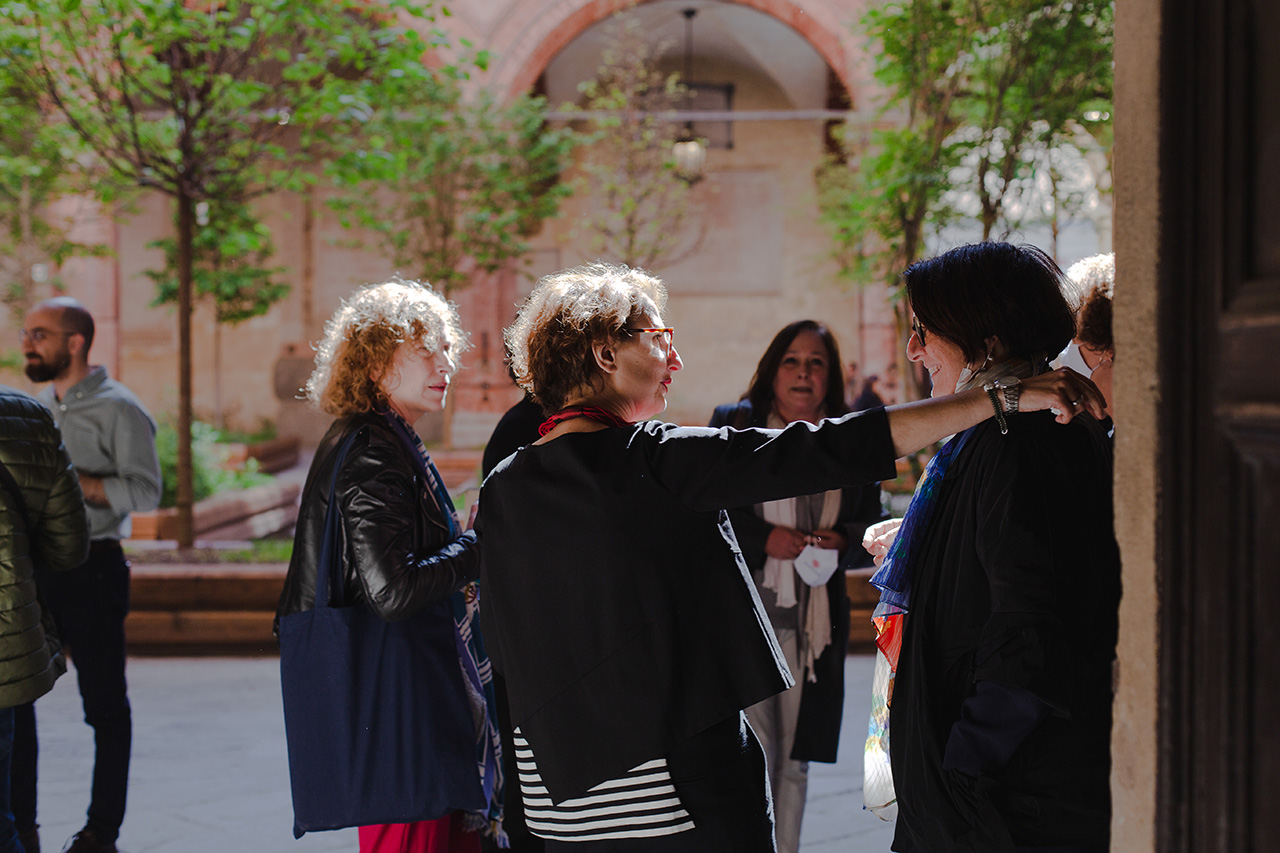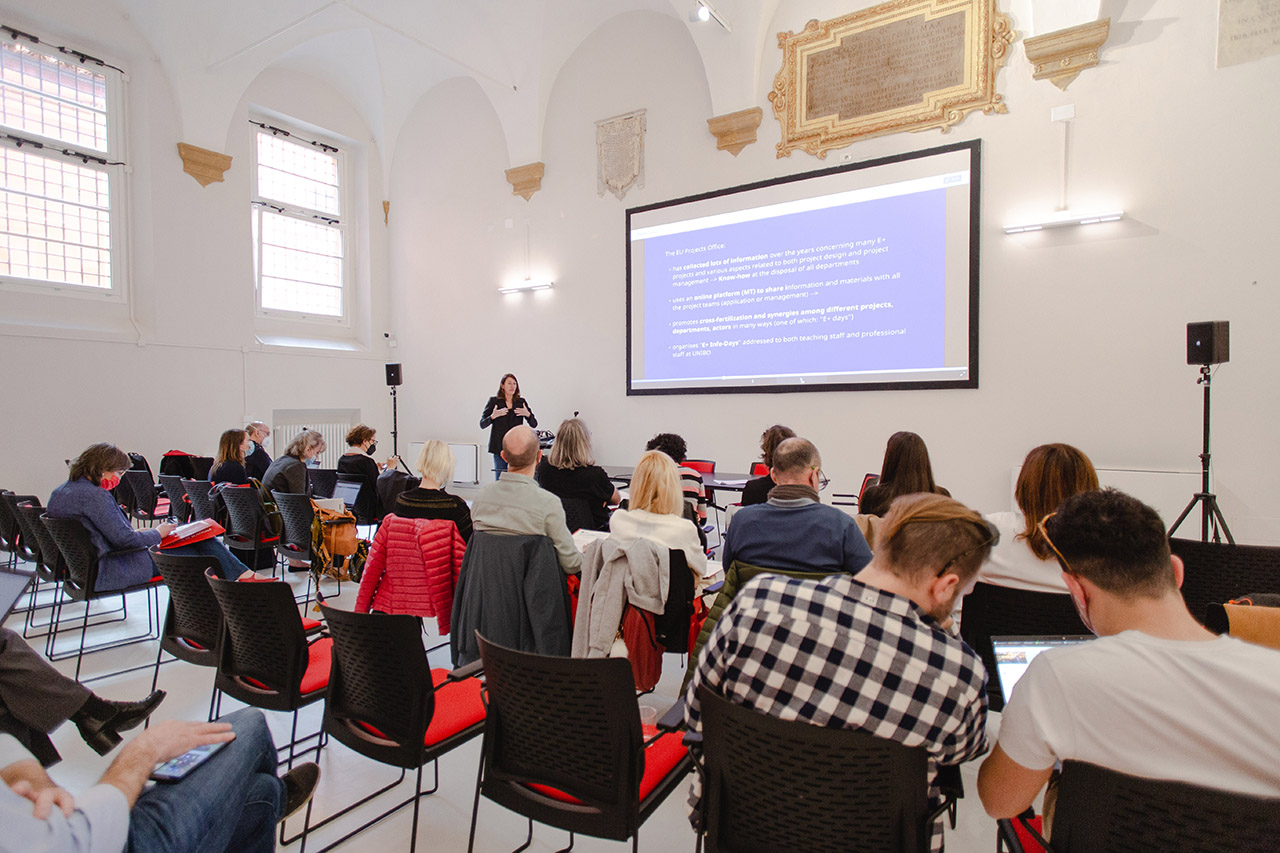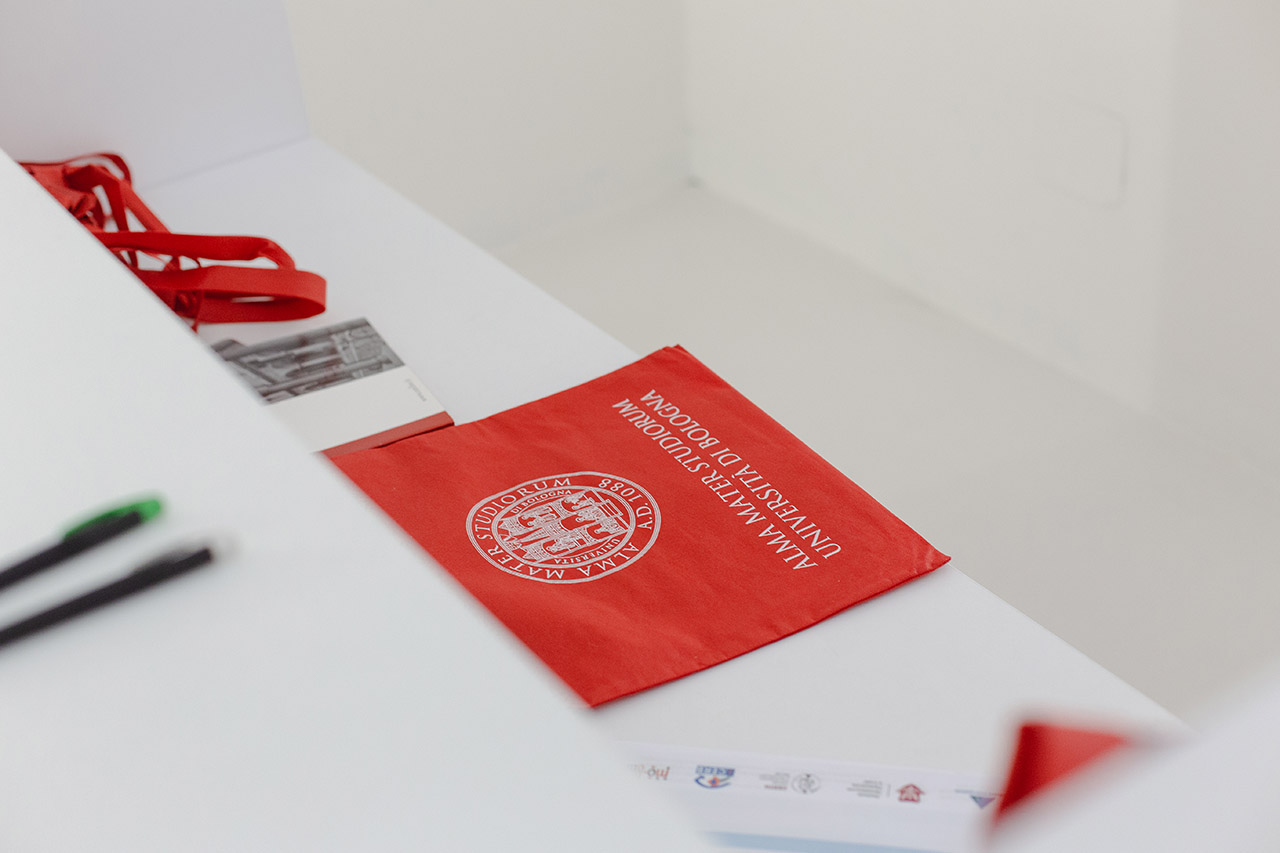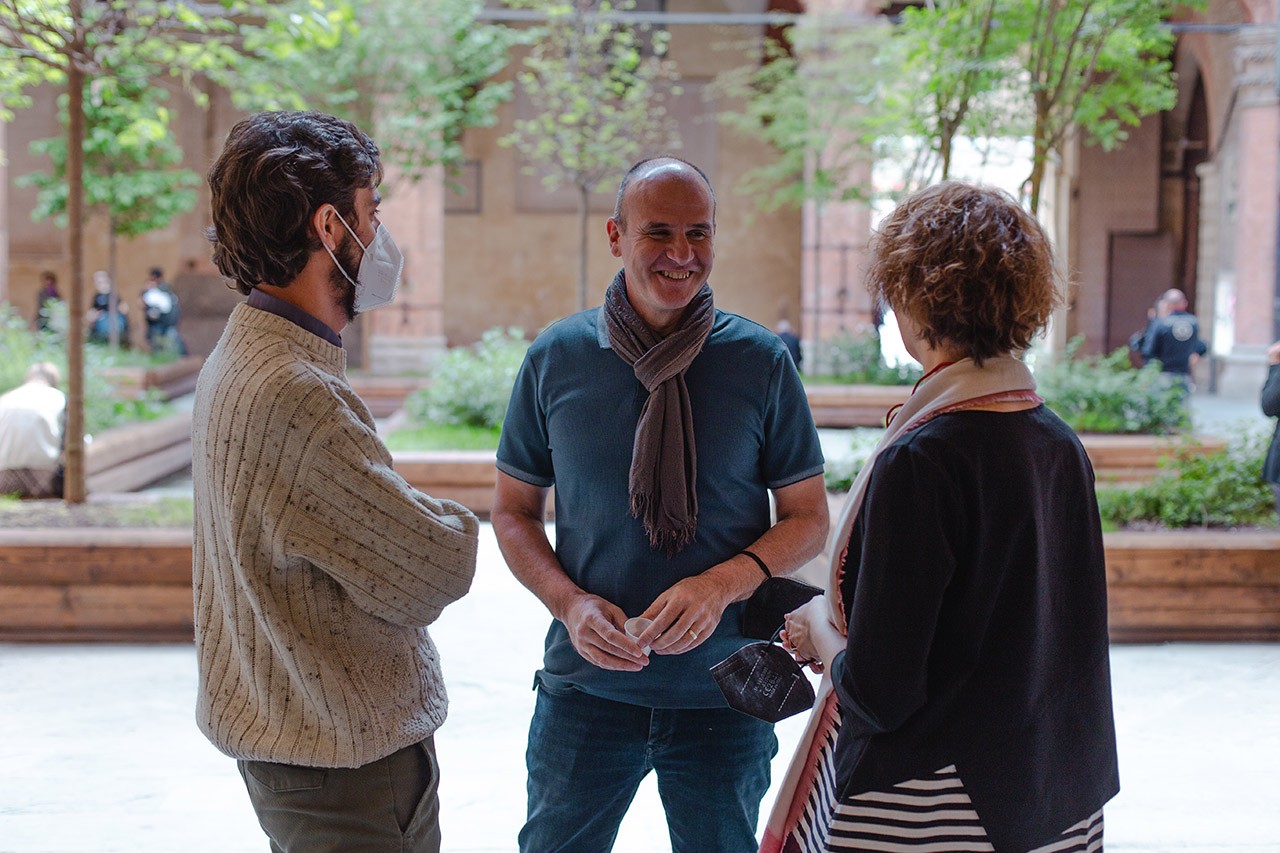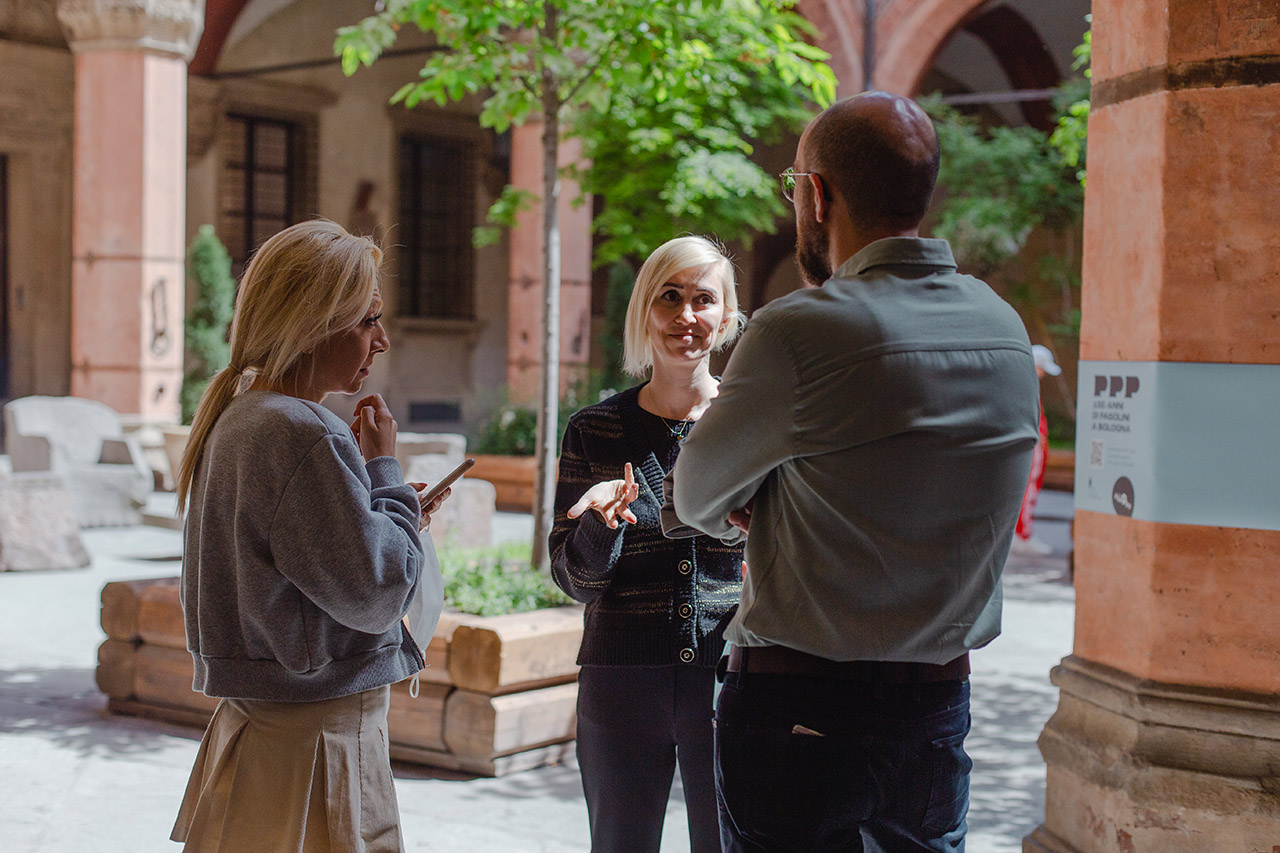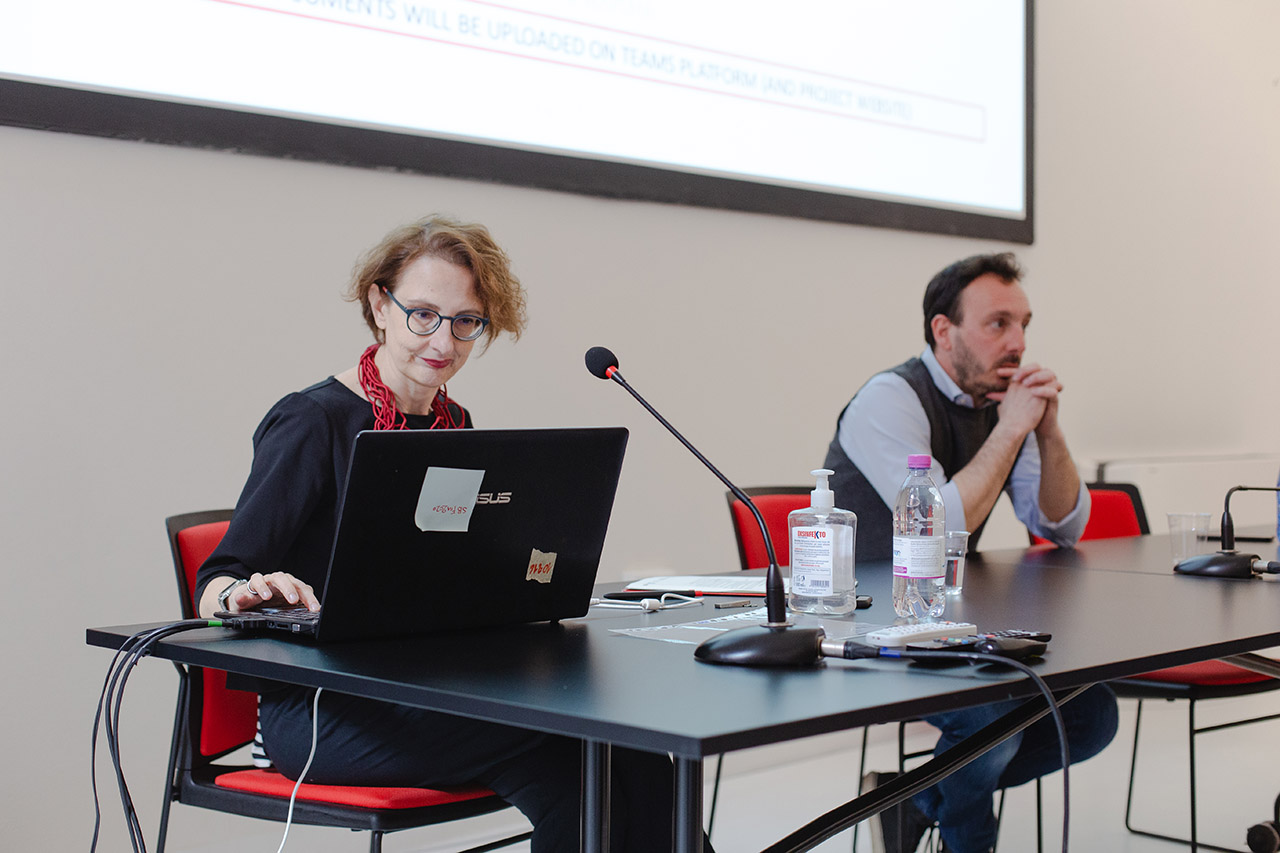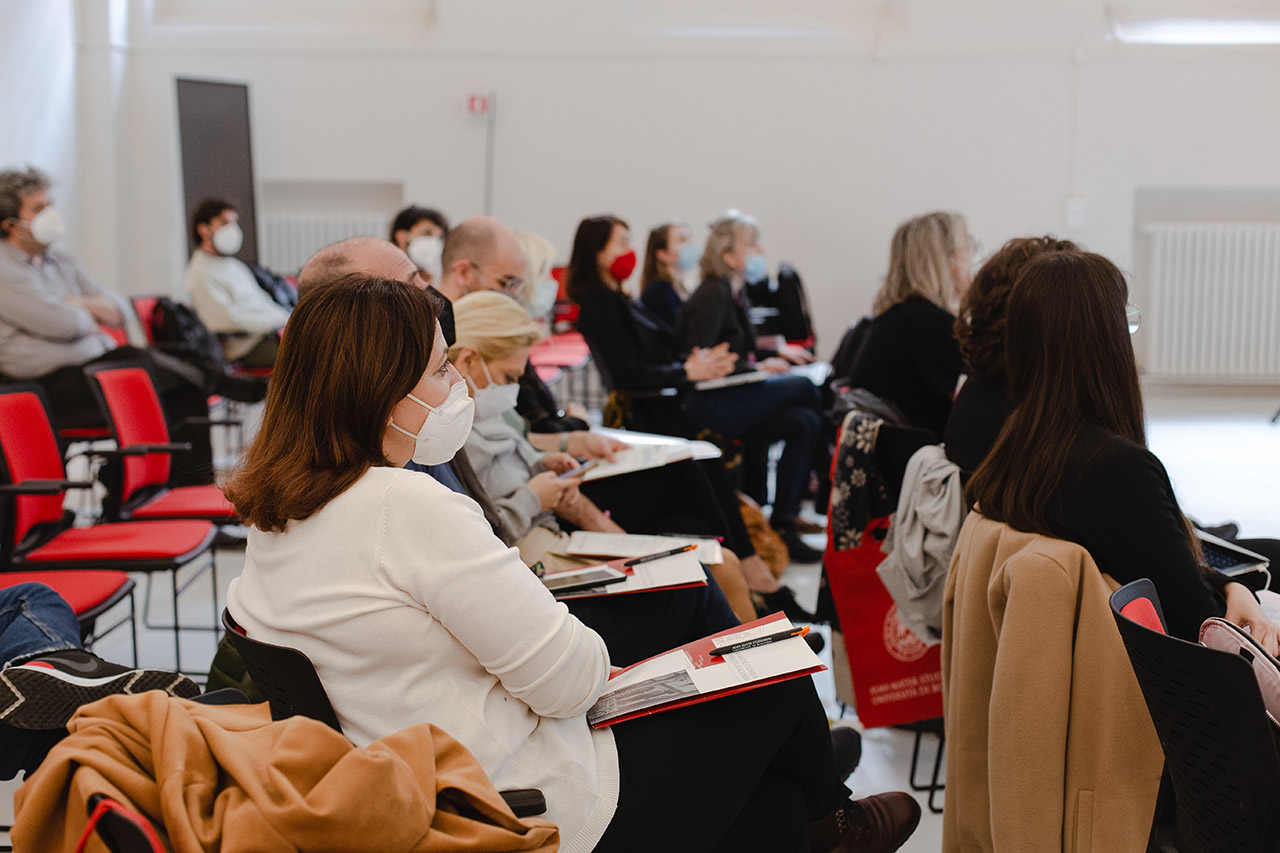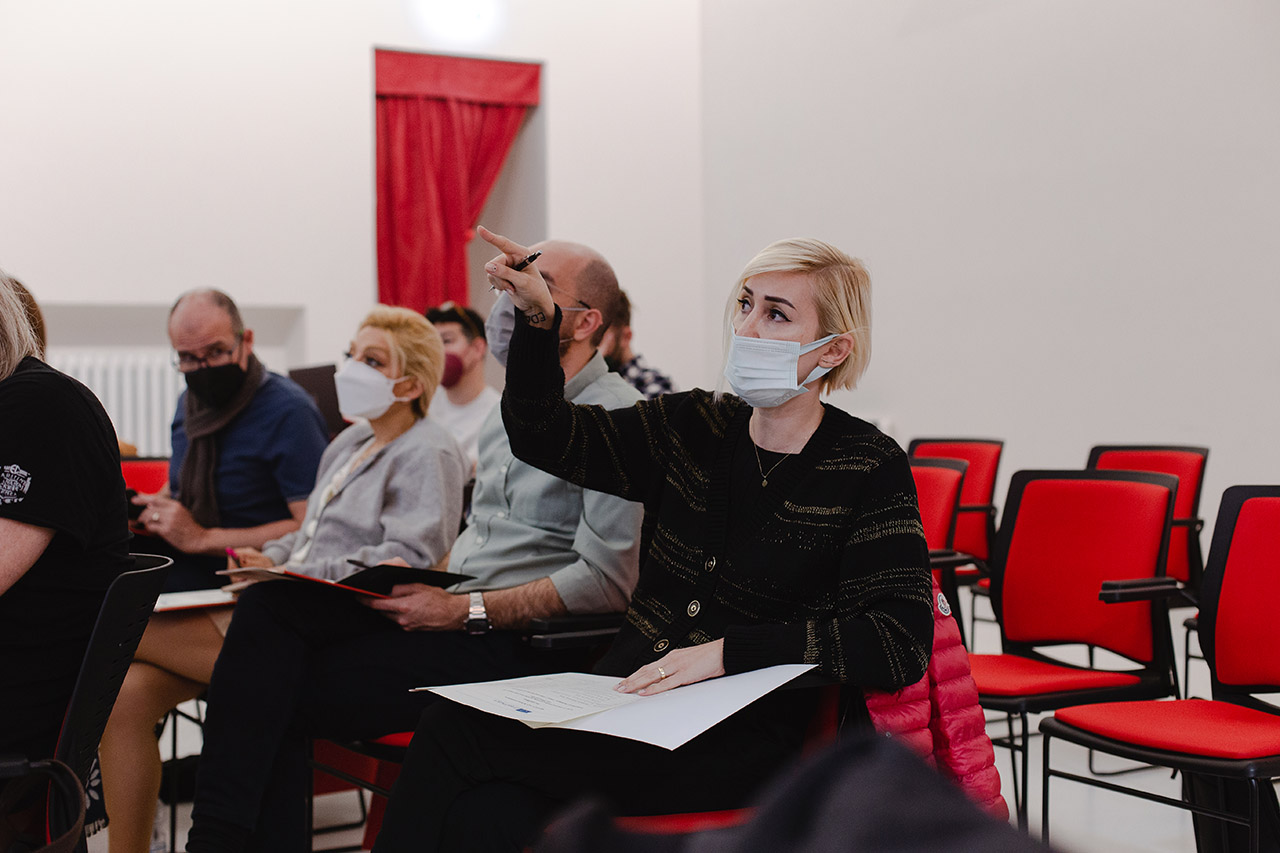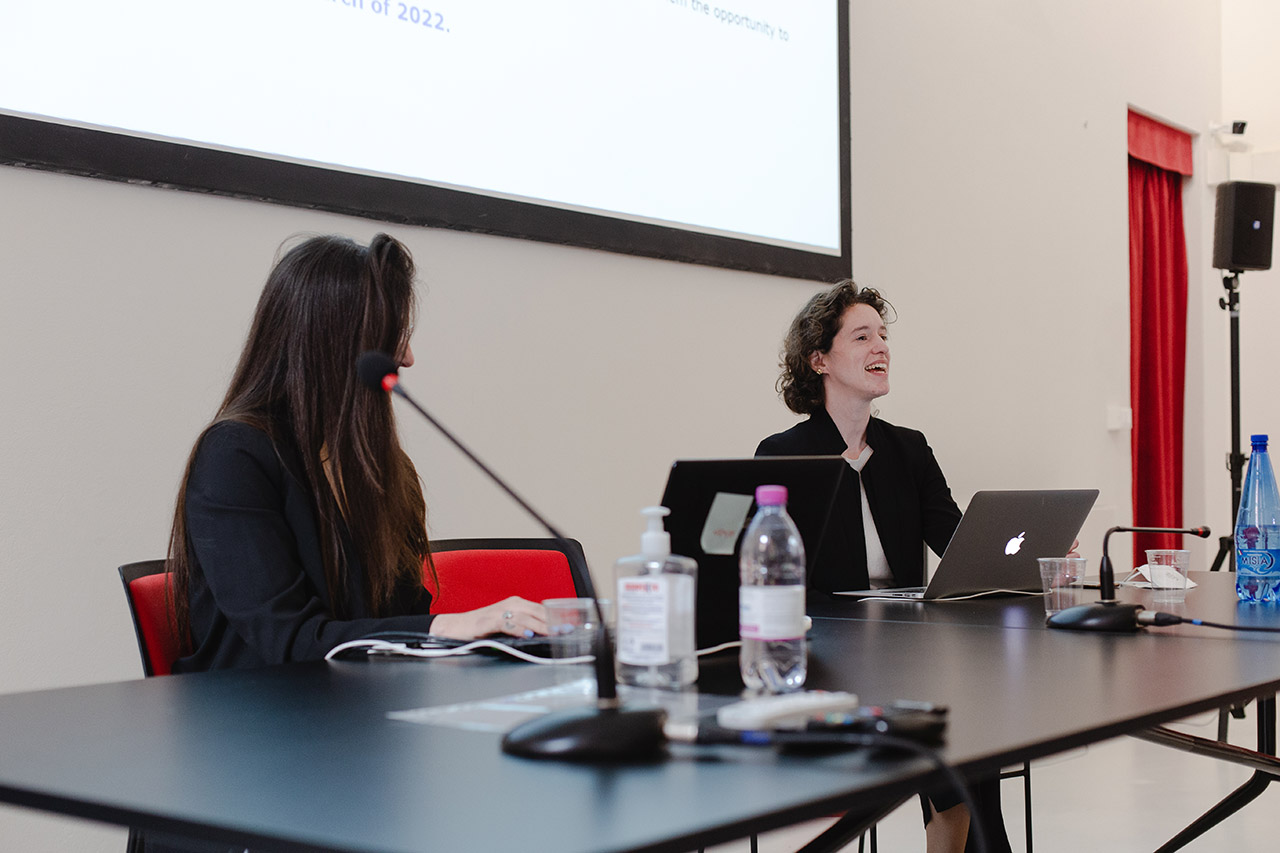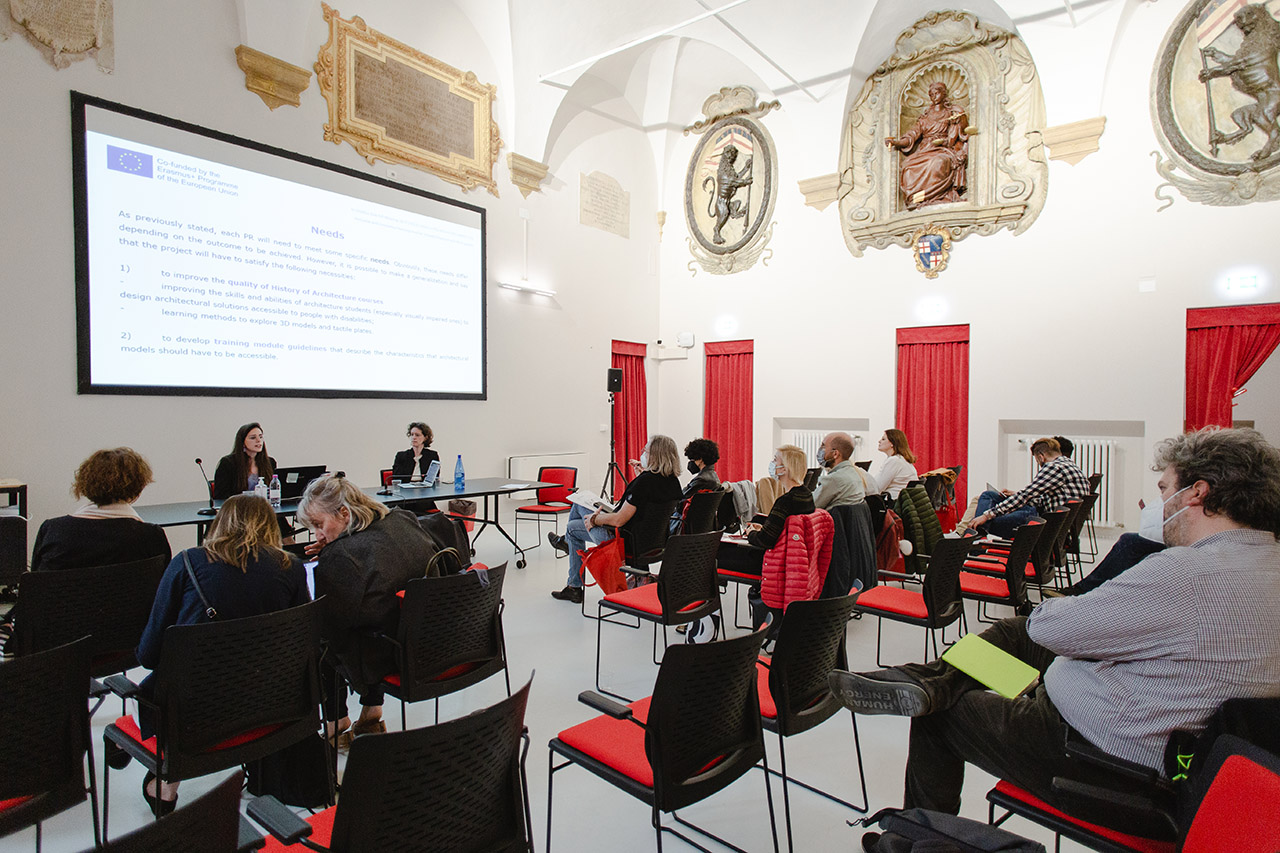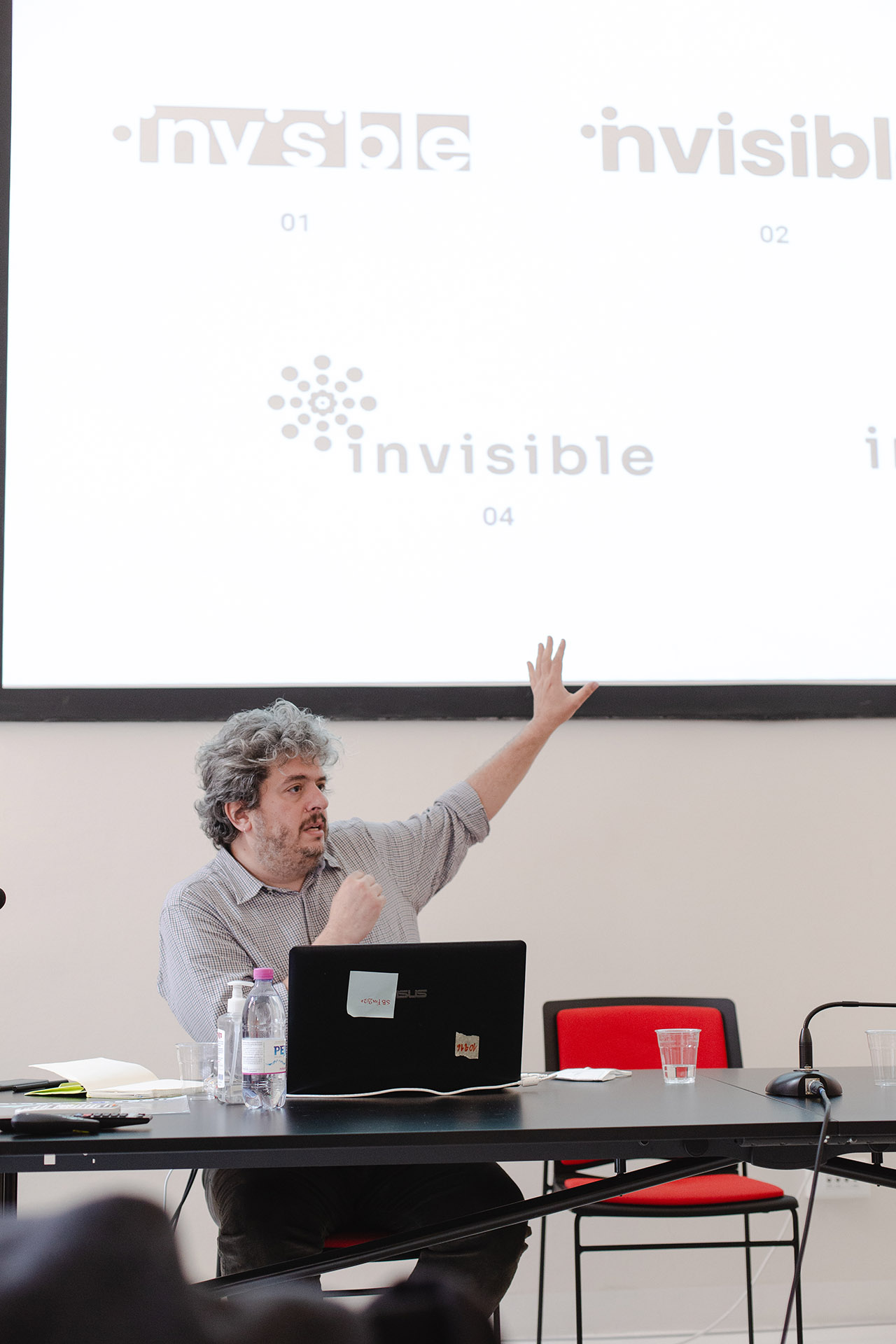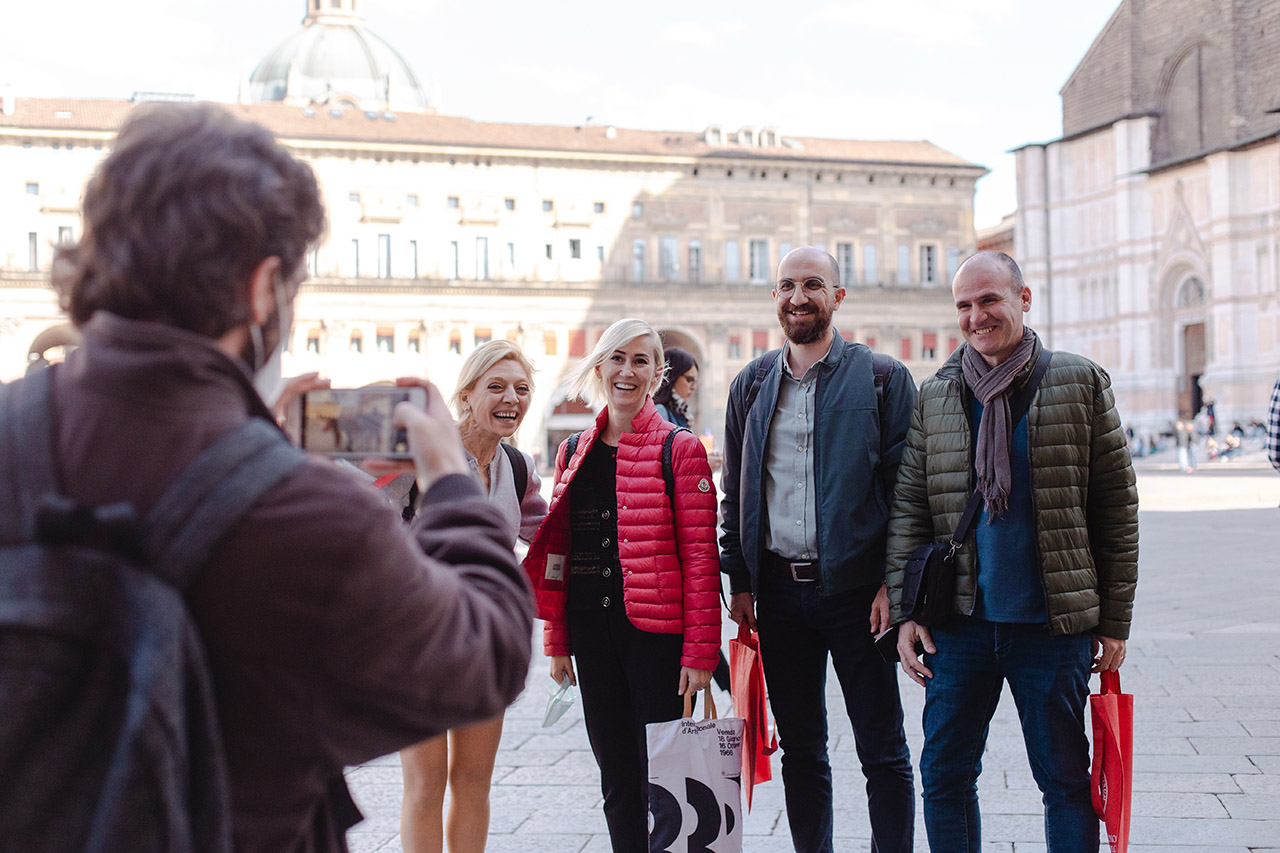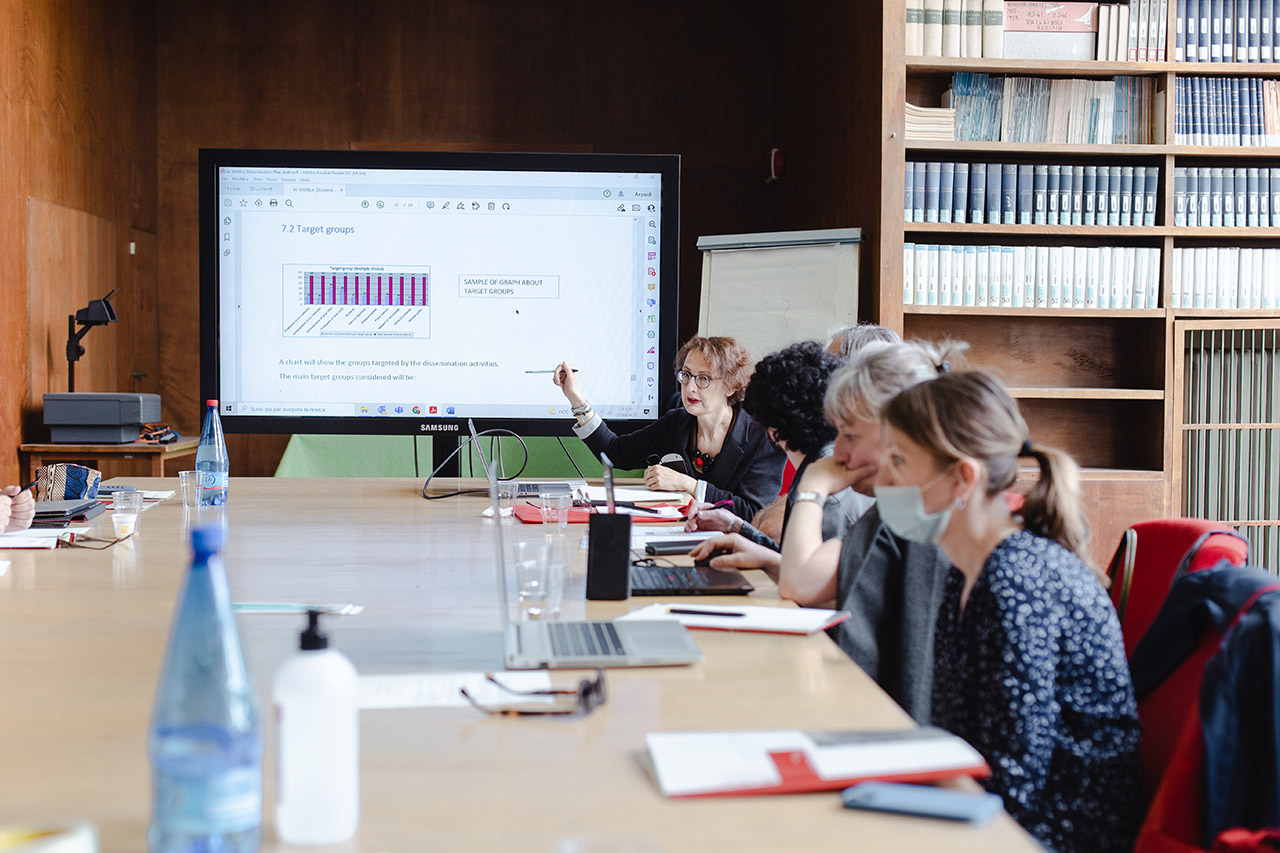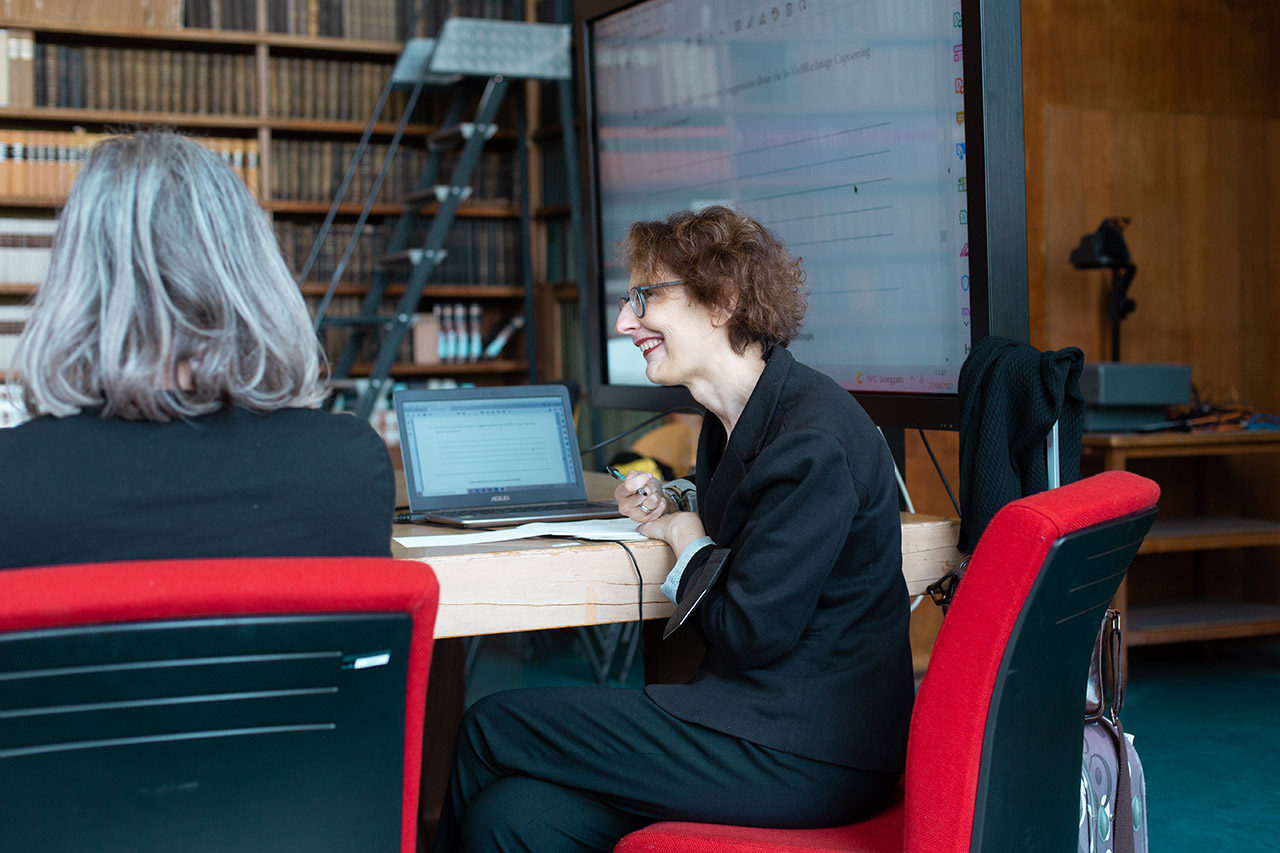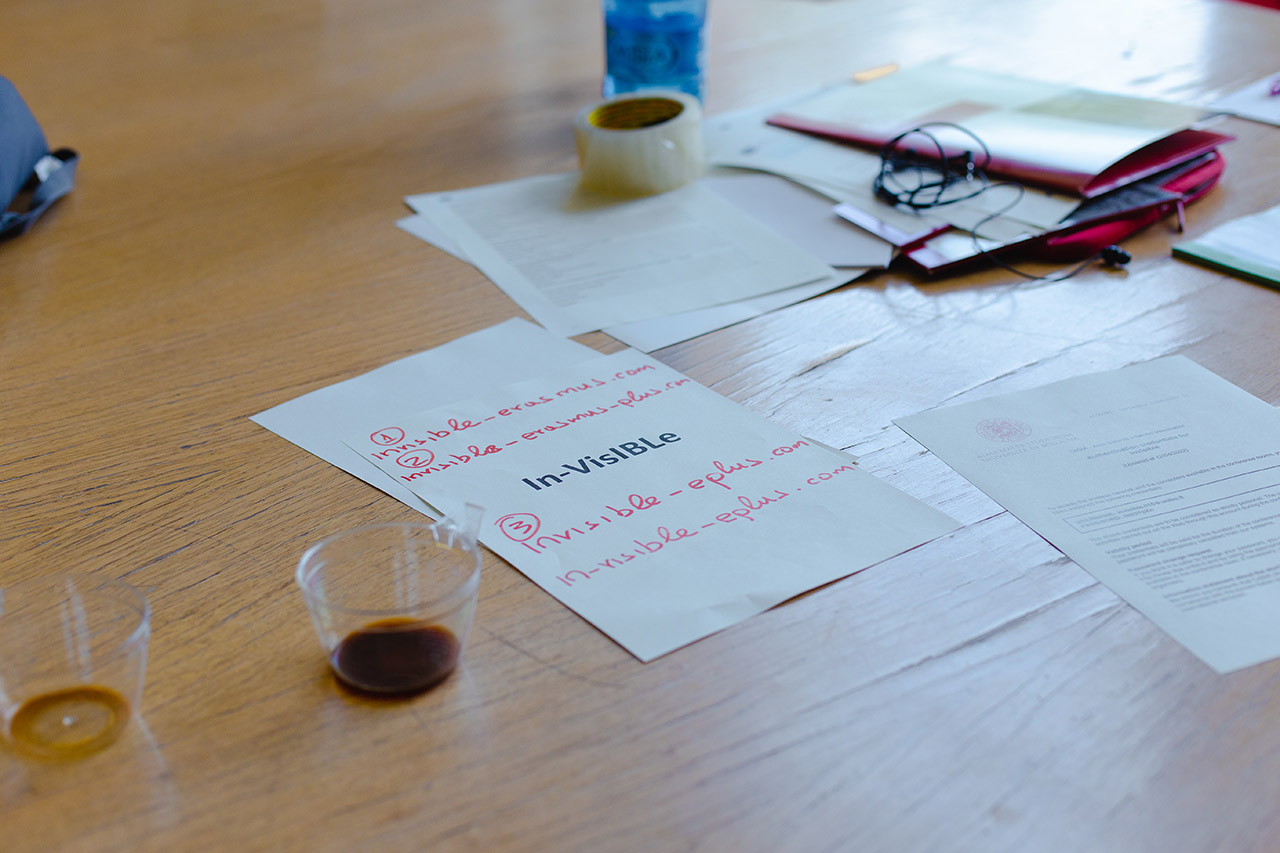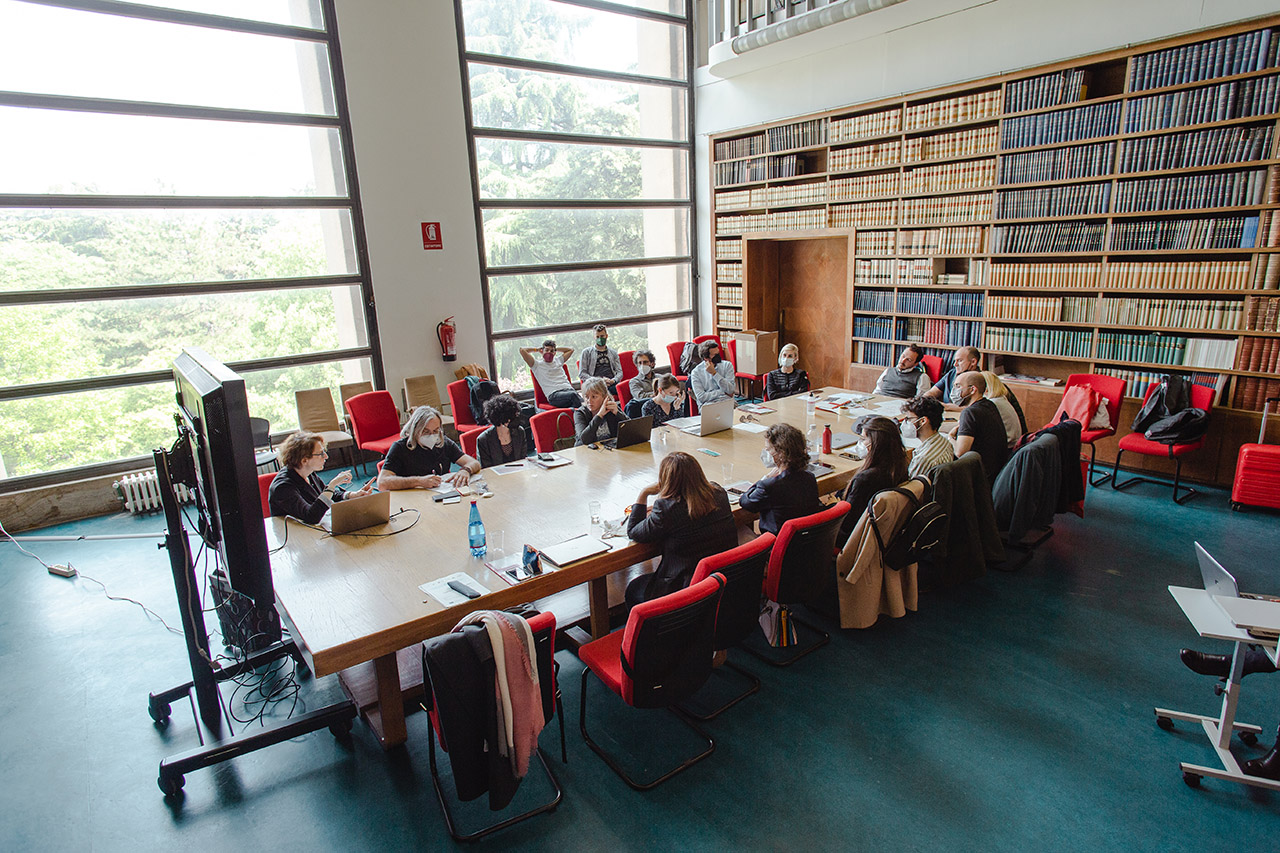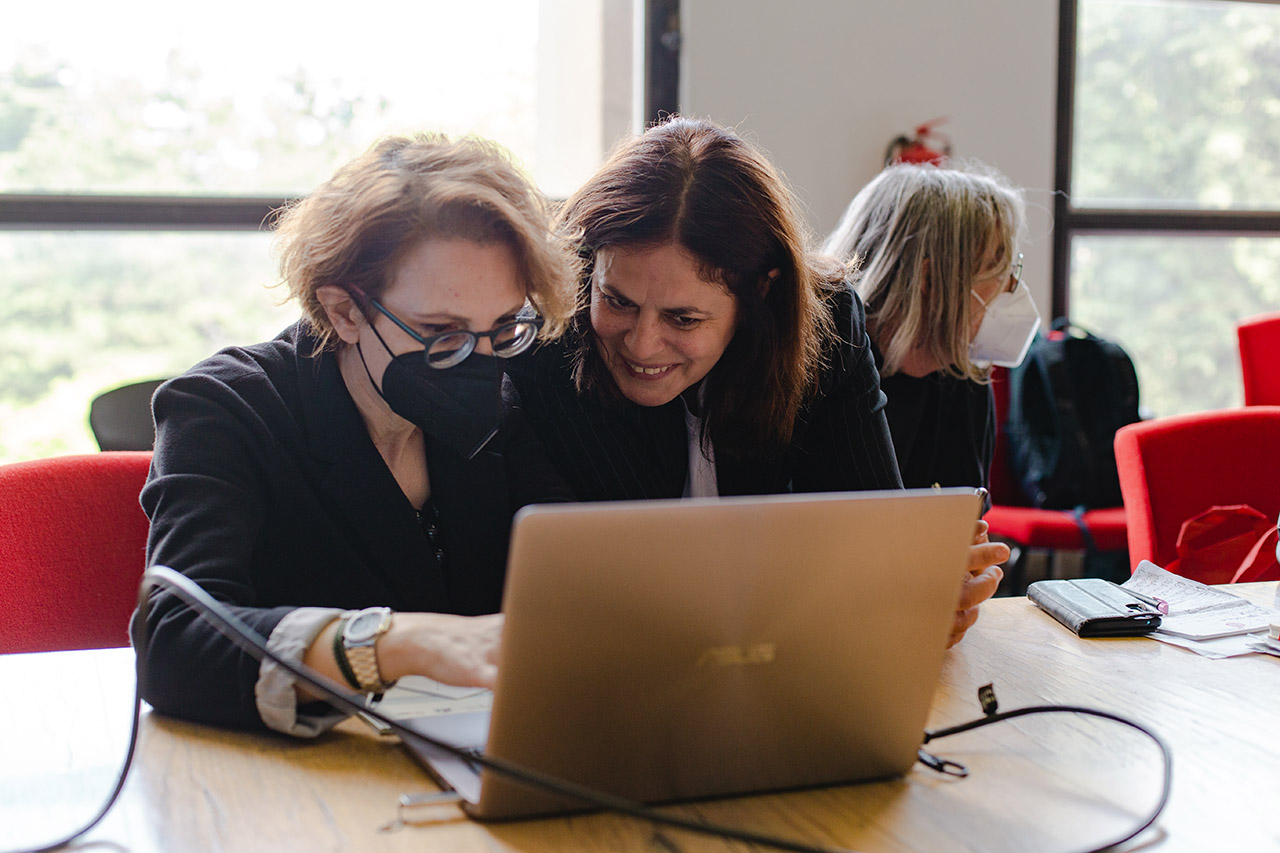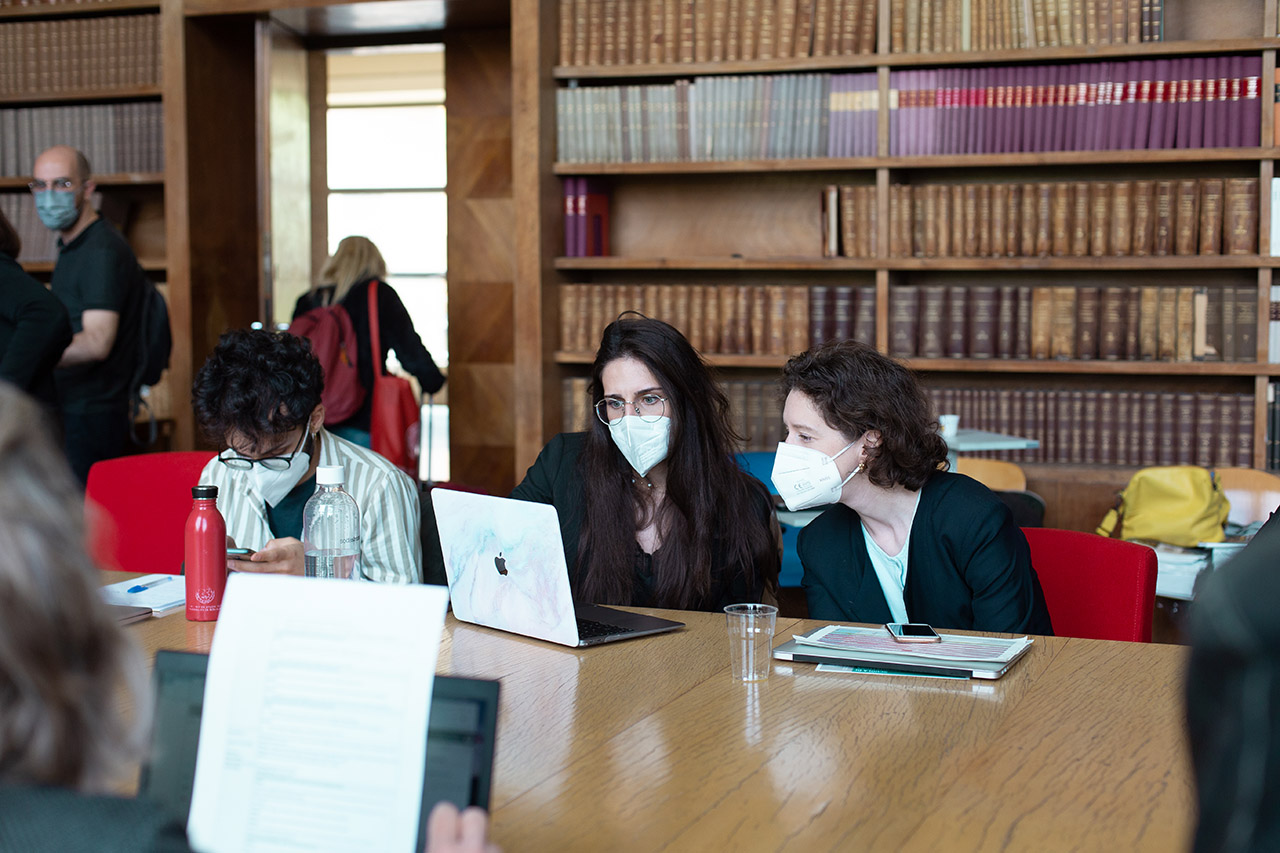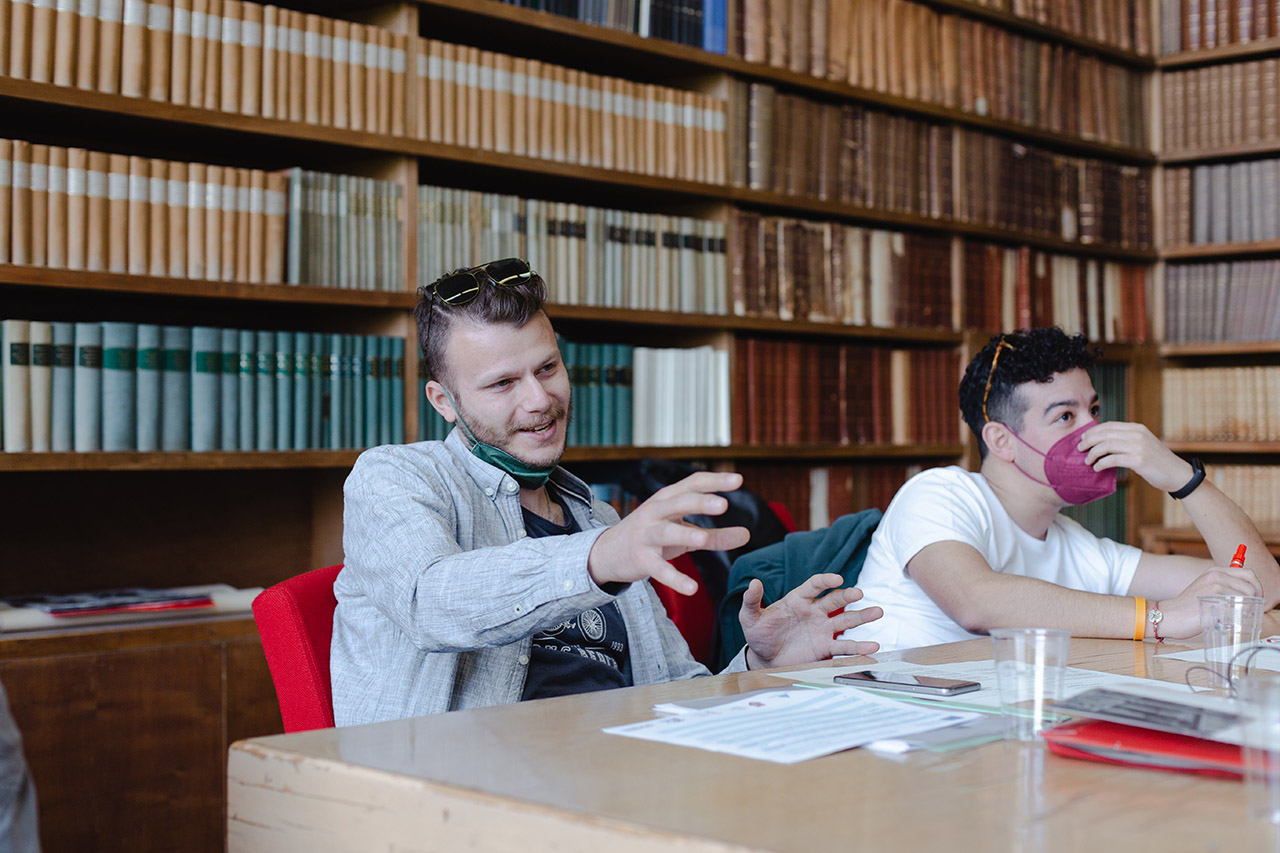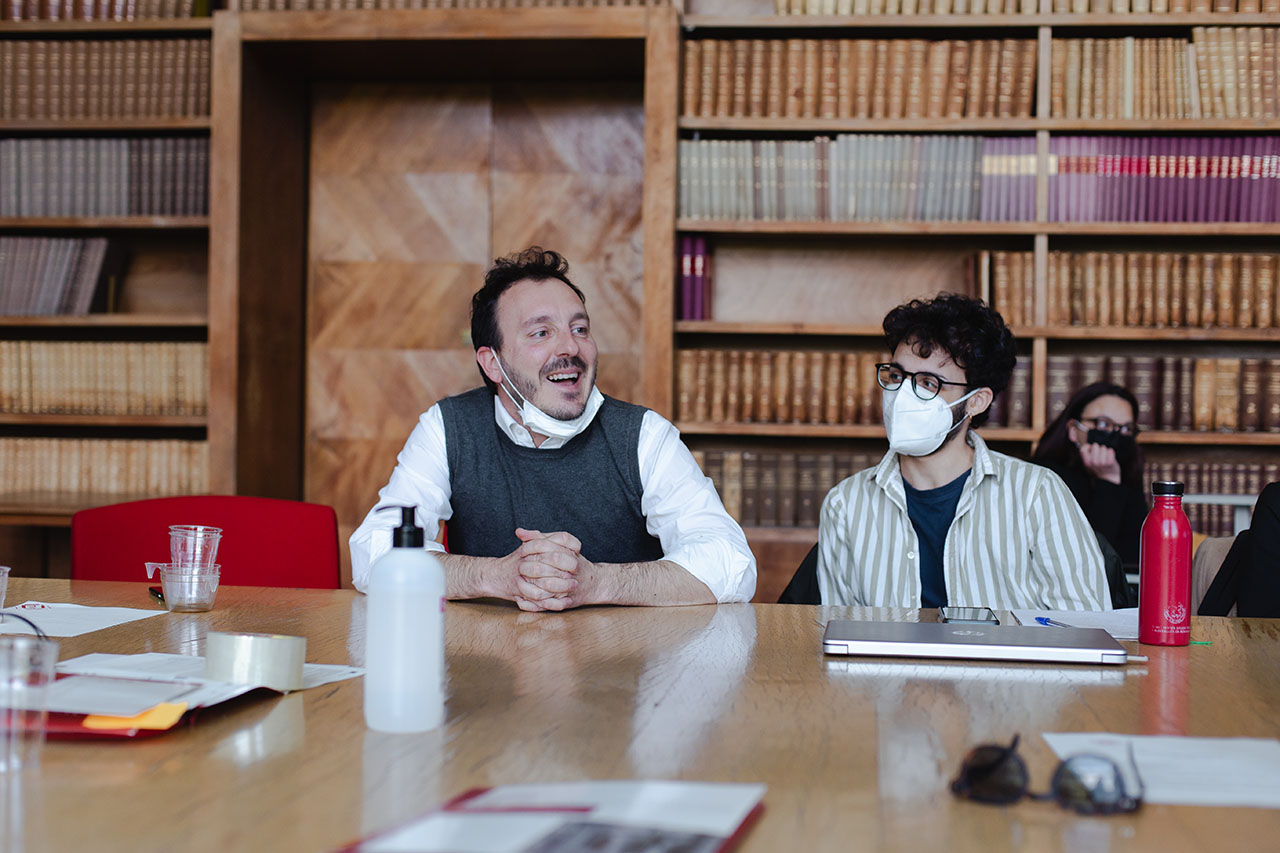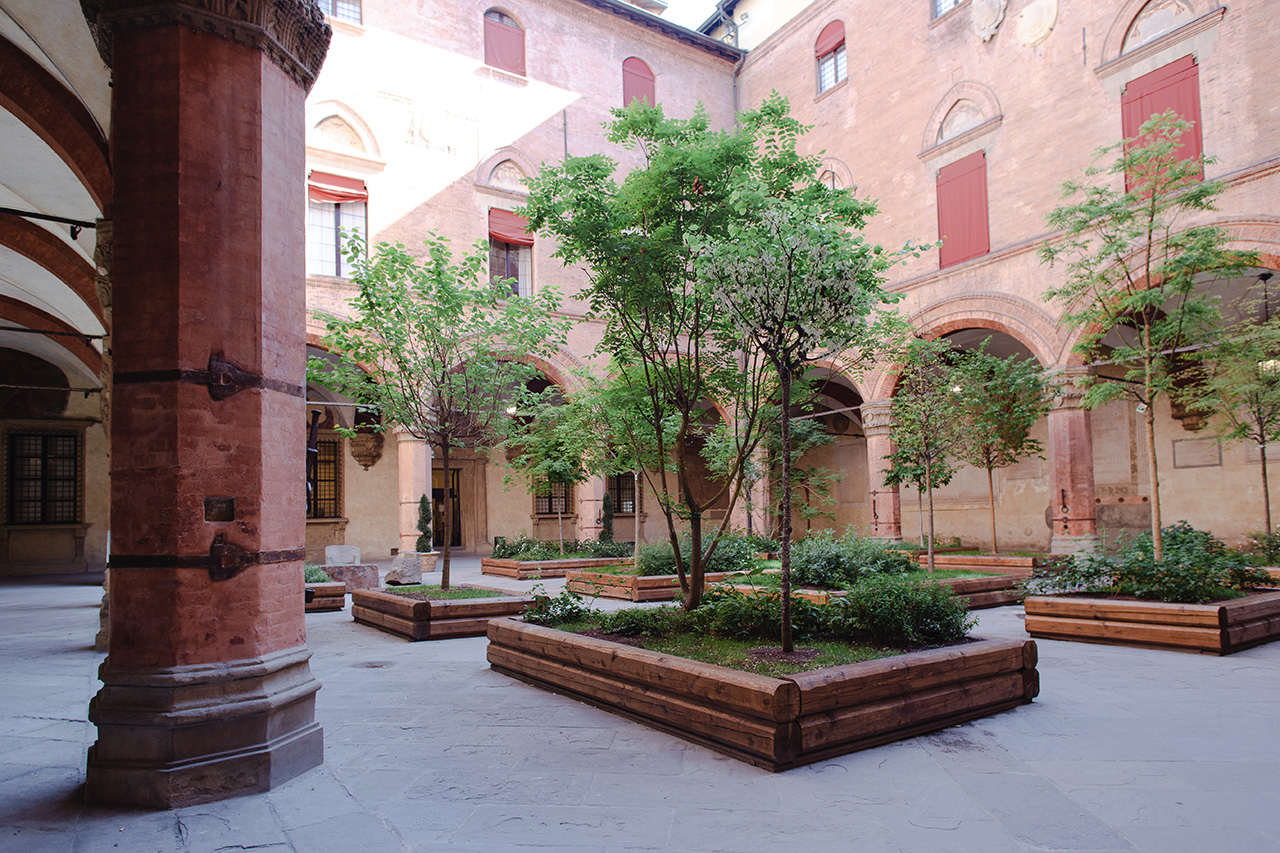In-VisIBLe Kick-off Meeting
The first Transnational Project Meeting of the project took place in Bologna, Italy
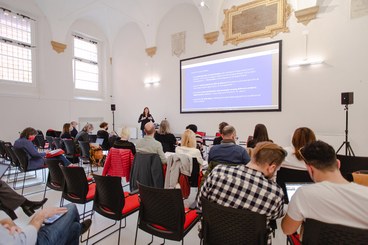
-
Date:
26 APRIL-27 APRIL 2022 -
Event location: Palazzo D’accursio, Sala Tassinari, Piazza Maggiore 6, 40126 Bologna, Italia
DAY 1 – Tuesday, 26th April 2022
After welcoming the project partners, the transnational meeting started with a short introduction by institutional speakers:
- Valentina Orioli, Councilor in charge of the Municipality of Bologna and Associate Professor at the University of Bologna;
- Cristina Demaria, Delegate of Unibo Rector for Equity, Inclusion and Diversity;
- Fabrizio Ivan Apollonio, Head of the Department of Architecture, University of Bologna;
- Paola Villano, Delegate of Unibo Rector for work well-being;
- Ira Vannini, Deputy Director of the Department of Education Studies, University of Bologna.
All the speakers have expressed their enthusiasm for the project and assured the support of University of Bologna and Municipality of Bologna to its implementation and dissemination.
Then Dr. Alessia Marchi from Unibo International projects office (DIRI) has showed facts and figures about the experience of University of Bologna in European projects and the main goals of the Erasmus+ 2020-2027 agenda. i.e.:
- fostering the quality and innovation in higher education;
- promote social inclusion and civic engagement;
- promote studies that can contribute to the green transition;
- supporting digital innovation.
Dr. Marchi highlighted the fact that In-VisIBLe project addresses three of these issues, proving that it can be truly relevant to the entire European community.
Prof. Micaela Antonucci (Project Coordinator and Associate Professor at the University of Bologna) and Dr. Tommaso Rovinelli (Research Manager at Unibo
Department of Architecture) reviewed the project schedule and the partners' tasks and responsibilities. The six scheduled Project Results to be achieved during the In-VisIBLe project have been discussed in detail, stressing the role of each project partner in their implementation. The partners were asked to indicate, within a short time (10 days), the members from their teams who will work in each of the PRs.
In the afternoon, Prof. Valeria Friso (Project co-leader and Associate Professor at the University of Bologna) and Dr. Sara Marchesani (University of Bologna scholarship fellow) presented the results of the Review of good practices and Needs analysis carried out during the period February – April 2022. These facts and figures, based on data collected from both the project partners and associated partner, proved to be a useful support to pursue the objectives of In-VisIBLe project and to the knowledge of the possible problems in the implementation process.
Then Dr. Stefano Ascari (Adjunct Professor at the University of Bologna) showed the proposals for the project logo, each of whom was combined with a braille version. All participants agreed that the logo should be simple, impressive and, above all,accessible to blind or visually impaired people.
The choices of the participants focused on the logo proposals 01 and 02 because they were considered more fit for people with visual disabilities. Before choosing a logo, some partners asked to "test" it - so they could make the right decision that is responsive to the needs of people with visual impairments.
It was proposed to create a shared document among all partners who will be involved in the implementation of the website/MOOC to share graphic structure. The discussion about the website focused on the fact that it should have a simple style, it should not include image transitions and it should be user-friendly for both normally sighted and visually impaired people. Dr. Ascari prepared a Google Form where partners could indicate their choices about the logo and interface of the website. Partners were asked to express their votes within a few days after the meeting.
Finally, Dissemination & Communication strategies and tools were presented by the Project Coordinator, laying the groundwork for the discussion scheduled on Day 2 of TPM.
The PC stressed the issue that the impact of the project depends on the commitment of each partner to communicate processes and results of the activities conducted and asked all the partners to be involved and contribute to Dissemination & Communication activities.
DAY 2 – Wednesday, 27th April 2022
The Project Coordinator led the discussion about Dissemination Plan and Quality Evaluation Plan drafts.
Regarding the Dissemination plan, all partners agreed to produce at least 1 article or interview per year and 1 conference/round table per year to present the project results and activities. It was proposed and approved that each partner shall be responsible for the dissemination of the Project Results of which they are Leader or co-leader.
The appointment of a social media manager in charge of the dissemination of the project results through social networks was proposed by the PC and approved by all partners. The ashtags to be used in future social posts have also been chosen; #accessibility #inclusion and #accessibleart have been added to those already present in the Dissemination Plan draft.
The name of the project website has been chosen by all partners among four proposals: the final choice is www.invisible-eplus.com. The partners discussed about the cost to buy the domain and the need to have an administrator for five years.
Tasks and responsibilities of the partners who will work on building the MOOC and the web platform and their interconnection were discussed.
The PC stressed what the project application in the states PR4 (In-VisIBLe web platform) section:
“A web platform will be developed for storing the material and giving access to it in a user-friendly comprehensive way. The platform (…) will have the necessary mechanisms to provide accessibility to visually impaired or blind people. The platform will have three types of users: anonymous user, authenticated user and editor. An anonymous user will only have ‘view’ permissions while an authenticated user will have ‘view’, ‘create’, ‘edit’, ‘delete’ and ‘suggest’ permissions. Concerning the ‘edit’ and ‘delete’ permission an authenticated user can edit and delete only their own generated content. Additionally, an authenticated user can also propose their content for open-access to an editor. An editor will have all the permissions of the authenticated users except from the suggestion. Instead, they can approve or reject the suggested content.
The project will host three types of content in the web platform: guidelines for creating content for visually impaired or blind people, open-access material, and private material. (…)
The guidelines and open-access materials ca be managed only by the editors. On the other hand, private material is managed by authenticated users that created it with edit and delete rights.
An account is not required in order to access the guidelines and open-access material. The users will create an account only if they want to generate and upload their material to the platform. (…)
The content that can be created in the web platform includes
- 3D models for historical architectures that can be printed with a 3D printer
- images
- videos,
- blind road maps.
Links to the content will be generated in order to make it accessible from the e-learning platform. At the same time the e-learning platform
will be accessible by the web platform”. So, regarding the discussion about the relationship among the web platform and
the MOOC, these points were highlighted:
- The content that can be created in the web platform includes
1) 3D models for historical architectures that can be printed with a 3D printer, 2) images, 3)videos, and 4) blind road maps, no new MOOC. So, YU-CSE is in charge of creating the structure of the web platform in order to store the project results and make them freely accessible; let authorized users create and upload newcontents belonging the 1-4 described typologies; provide a link to the e-learning platform with the MOOC; - AHE will create 3 up to 5 pilot MOOC on e-learning platform, using the tools produced by Invisible project (History of Architecture modules, images tagging system, links to the files to print 3D models); the MOOC will be “static” and “closed” (they can’t be modified by users) and they will be linked to the web platform.
- Users can create their MOOC using the materials and tools on the web platform, but they can’t upload their MOOC on the web platform (because they need to be checked).
The project’s Steering Committee was appointed and it is composed by:
Aneta Poniszewska, Akademia Humanistyczno-Ekonomicza w Lodzi
- Andrea Socrati, Museo Omero
- Dionysis Goularas, Yeditepe University Vakif
- Kostas Georgiadis, Centre for Research and Technology Hellas
- Katerina Athanasiadou, Centre for Education and Rehabilitation for the Blind
- Micaela Antonucci, University of Bologna
The Quality Evaluation Team, which will be in charge of the Quality evaluation of the project, is composed of the SC members and by Valeria Friso and Sara Marchesani from University of Bologna. The final discussion was focused on "What's Next?": project timetable was showed and the scheduled activities that each partner shall implement within the next Transnational Project Meeting in Istanbul (September 2022) were discussed in detail.
After each of the scheduled six Transnational Project Meetings, a report will be drafted and sent to all partners by the organizing partner. The Project Coordinator, with the collaboration of the Steering Committee and Quality Evaluation Team will regularly monitor the project implementation every six months, by collecting from each partner internal reports on the activities carried out and results achieved.
Album
